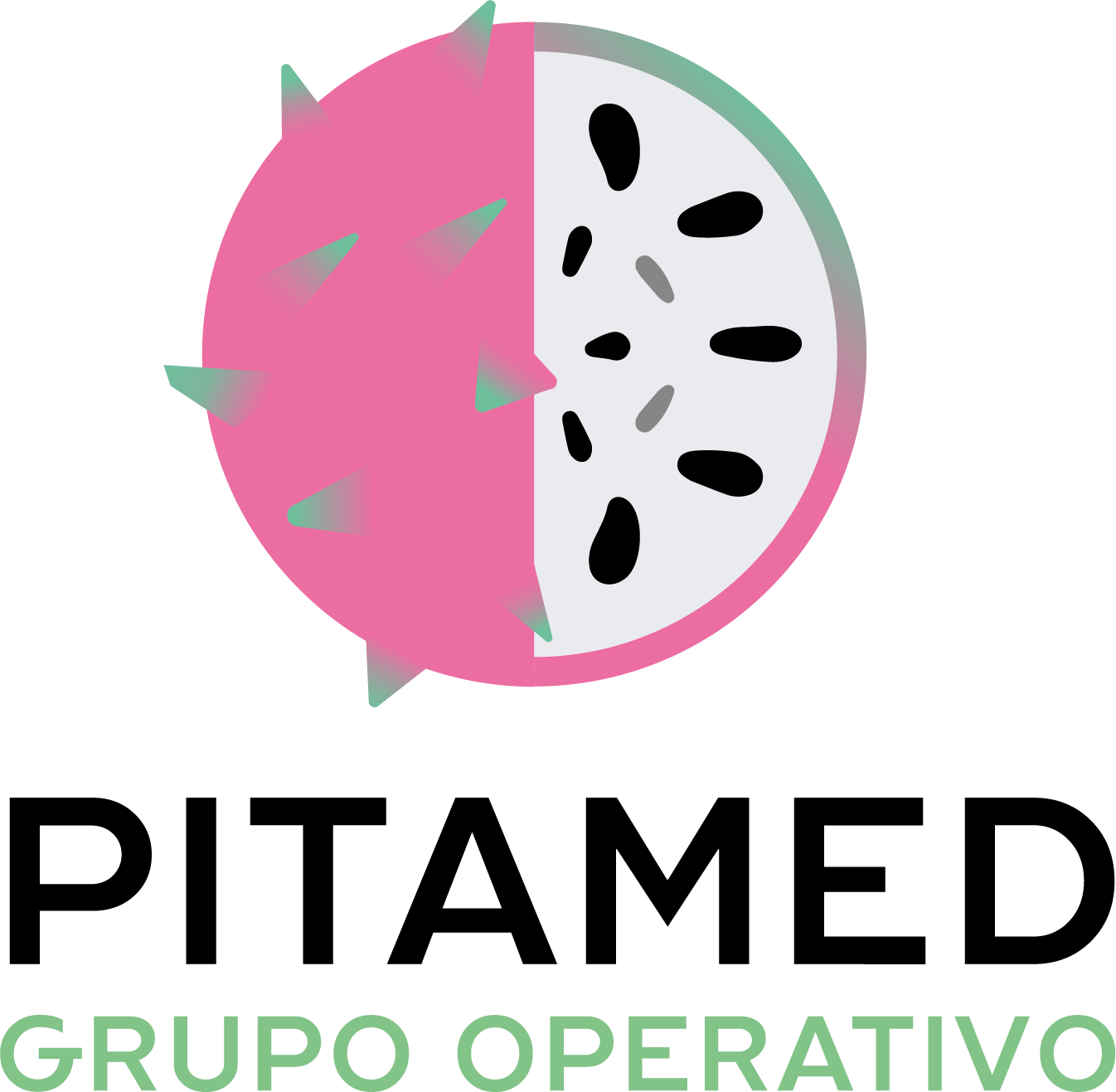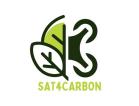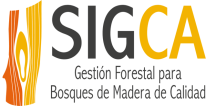
PITAMED Operational Group: Sustainable pitaya cultivation in Spain
- Type Operational group
- Status In progress
- Execution 2024 -2027
- Assigned Budget 594.475,12 €
- Scope Supraautonómico
- Autonomous community Andalucía; Canarias; Comunitat Valenciana
- Main source of financing CAP 2023-2027
- Project website GO PITAMED
The aim of this project is to produce pitaya in Spain to supply the European market. To achieve this, it is necessary to develop a production model with the structures and management systems appropriate for our production areas and to cultivate varieties that meet market demand and adapt to each agroclimatic zone.
Efficiency in the use of water and nutrients must be maximized and integrated pest and disease control must be carried out to ensure sustainability, efficiency and profitability.
Cultivation techniques (pruning, thinning and pollination) will also be developed and technologies (climate control and artificial light) will be applied to regulate flowering and fruiting dates in order to increase yields and the quality of the harvest and extend the harvesting period.
Finally, the optimum point of ripening will be established and protocols will be established for harvesting, handling, packaging and conservation, which guarantee the quality of the fruit at its destination, highlighting the health benefits thanks to the presence of bioactive compounds.
The European market is the world's largest importer of fresh fruits and vegetables and is open to new products. Therefore, although pitaya is a relatively new and little-known product, its price is high. Despite this, it continues to attract more and more consumers on the continent. If the cost can be reduced and the nutritional value of pitaya can be raised, it will undoubtedly reach the majority of the population in European countries, and Spain can lead the production and marketing of pitaya in Europe.
The innovative project aims to develop a value chain with pitaya produced in Spain based on sustainable processes and product quality to ensure profitability. To achieve this, it is necessary to develop an optimal production model for potential Spanish producing areas.
- Establishment of more appropriate structures and management systems for sustainable pitaya production in the various producing areas.
- Irrigation and fertilization recommendations to improve farm sustainability and the development of a digital tool for their management.
- Recommendations-guides for integrated pest and disease control in crops, a digital tool for their management.
- Establishment of fruit-bearing pruning criteria and thinning of reproductive structures to improve fruit yield and quality and modify production dates.
- Define an artificial light management strategy to modify the photoperiod, increase flowering and thus production.
- Optimization of the artificial pollination process in self-incompatible and self-compatible varieties.
- Defining harvesting criteria, post-harvest handling, and processing to extend shelf life.
- Evaluation of outdoor and greenhouse production systems under mesh and plastic and conduction systems.
- Selection and evaluation of pitaya varieties in different producing areas.
- Study of the irrigation and fertilization needs of pitaya in the different production areas.
- Selection of cultivars best suited to different production areas in terms of productivity, quality, and market acceptance. Principles of fruiting pruning and thinning of reproductive structures.
- Artificial pollination: improving pollen collection and conservation techniques and the efficiency of their application.
- Establish the photoperiod and base temperature in cultivation chambers for the sprouting and floral development of the pitaya.
- Managing pitaya flowering by extending the photoperiod with artificial light.
- Study of harvest timing on quality and post-harvest shelf life. Protocol for processing pitaya fruit (fresh-cut).
The European market is the world's largest importer of fresh fruits and vegetables and is open to new products. Therefore, although pitaya is a relatively new and little-known product, its price is high. Despite this, it continues to attract more and more consumers on the continent. One limitation to market expansion is the need for fruit of consistent quality and in quantities that meet market demand (Chen and Paull, 2019). Immediately after harvest, when fresh, the fruit has a bright red appearance, but on the retail shelf, the fruit has lost appeal, as it is often wrinkled, with less shine, and the scales show severe dehydration and browning (Mizrahi, 2015). The scales and the fruit body also often show signs of mechanical abrasion and impact injuries, which occur during harvesting, transportation, and packaging. If the cost can be reduced and the nutritional value of pitaya can be raised, it will undoubtedly reach the majority of the population in European countries.
Spain can lead the production and marketing of pitaya in Europe. Our proximity to the market allows us to harvest the fruit at its peak ripeness, which, given its non-climacteric conditions, gives us a significant competitive advantage over third-country productions in terms of quality, flavor, and fewer post-harvest storage issues. Although production costs and, above all, labor costs may be higher than those in third countries, the high yields achieved with the proposed production model can balance the balance in this regard. Furthermore, transportation costs are much lower. Another very important advantage is the sustainability of our production. The lower carbon footprint resulting from transportation requirements and the optimized use of inputs (water, fertilizers, phytosanitary products) are our hallmarks. The opportunities for pitaya in Spain, for the European market, are associated with sustainable, low-waste, and even organic production markets.
- Develop a value chain for pitaya produced in Spain based on sustainable processes and product quality to ensure profitability. Develop optimal production models for Spanish agroclimatic environments.
- Develop environmentally sustainable cultivation techniques in different agroclimatic environments, incorporating digital tools.
- Increase crop yields and quality and extend the harvest and marketing period by managing flowering and pollination.
The innovative project aims to develop a value chain with pitaya produced in Spain based on sustainable processes and product quality to ensure profitability. To achieve this, it is necessary to develop an optimal production model for potential Spanish producing areas.
The focus is on greenhouse cultivation under protected netting or plastic, incorporating tools for climate management and control, leveraging and adapting greenhouse technologies and innovations used for horticultural crops in both southeastern Spain and the Canary Islands. The most efficient greenhouse management system will be determined, maximizing yields per unit of surface area, advancing the start of production and facilitating crop management, reducing labor costs (pruning, pollination, and harvesting), and taking into account installation and maintenance costs. This model is completely innovative compared to the one used in the main tropical production areas and can generate new opportunities, which can even be exported to other territories, as has been the case with vegetables grown under plastic.
The initial plant material is key to ensuring the success of this new production approach. The varieties best suited to this system will be selected for each agroclimatic zone, in terms of profitability and sustainability. A large amount of plant material (varieties of different species, hybrids, clones) from different origins is being introduced, and the sector needs to be clear about what best suits the market and our production system.
The project is firmly committed to sustainability by promoting environmentally friendly techniques and incorporating digital tools. It will provide knowledge about irrigation and fertilization needs in subtropical climate conditions and protected cultivation, developing a model for their calculation. Based on this, we will work to improve the efficiency of these resource use by implementing sensors, probes, and tissue analysis. We will also build a digital tool to facilitate irrigation and fertilization programs for pitaya advisors and producers.
- Coordinator/entity name: Association of Fruit and Vegetable Producer Organizations of Almería (COEXPHAL)
- Postal address: Carretera de Ronda, 11 1ºE, CP 04004, Almería
- Coordinator/entity email: victoria@coexphal.es, gladys@coexphal.es
- Telephone: 687696989/603409506
The innovative project aims to develop a value chain with pitaya produced in Spain based on the sustainability of the processes and the quality of the product to ensure its profitability. To achieve this, it is necessary to develop an optimal production model for potential Spanish production areas.
The focus is on protected greenhouse cultivation, under mesh or plastic, incorporating tools for climate management and control, taking advantage of and adapting greenhouse technologies and innovations used for horticultural crops both in the southeast of Spain and in the Canary Islands.
The most efficient management system will be determined, maximising yields per unit of surface area, advancing the entry into production and facilitating crop management, reducing labour costs (pruning, pollination and harvesting) and taking into account installation and maintenance costs.
This model is completely new compared to the one used in the main tropical production areas and can generate new opportunities, which can even be exported to other territories, as has occurred with vegetables grown under plastic. The starting plant material is key to guaranteeing the success of this new production orientation.
The varieties that best adapt to this system for each agro-climatic zone will be selected, in terms of profitability and sustainability. A large amount of plant material (varieties of different species, hybrids, clones) from different origins is being introduced and the sector needs to be clear about what best adapts to the market and our production system. The project is firmly committed to sustainability by promoting environmentally sustainable techniques and incorporating digital tools.
It will provide knowledge on irrigation and fertilization needs in subtropical climate conditions and protected cultivation, developing a model for their calculation. On this basis, we will work to improve the efficiency in the use of these resources, implementing the use of sensors, probes and tissue analysis, and we will build a digital tool to facilitate irrigation and fertilization programs for advisors and pitaya producers.
- Asociación de Organizaciones de Productores de Frutas y Hortalizas de Almería (COEXPHAL)
- Fundación Grupo Cajamar
- ANECOOP S. COOP.
- COOPERATIVA AGRÍCOLA DE SAN NICOLÁS DE TOLENTINO, COAGRISAN
- SERVICIO TÉCNICO DE AGRICULTURA Y DESARROLLO RURAL DEL CABILDO INSULAR DE TENERIFE, CABILDO INSULAR DE TENERIFE
- EJCV (ENRIQUE JOSÉ CAMACHO DE VOLDER )
- NEW GROWING SYSTEM SL
- UNIVERSIDAD DE ALMERÍA (UAL)
- INSTITUTO CANARIO DE INVESTIGACIONES AGRARIAS (ICIA)







